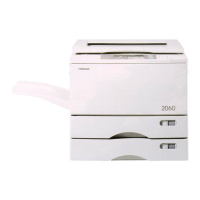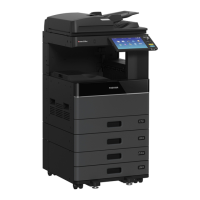TOSHIBA THE 60
TH
SERIES ANALOG COPIERS – THE MIDDLE CLASS:
2060 3560 AND 4560 MODELS
OVERVIEW
As a logical progression to our series of articles, about Toshiba analog copiers, comes the
current and last addition. By “last” I mean that there is not particular interest in discussing the high
end copiers over 50 copies per minute, because they are relatively rare and not many technicians get
a chance to work on them. The next addition to the series of articles will cover the most common
and distinct defects, found in the previously discussed models, but not before we familiarize
ourselves with the middle class analog copiers of the 60
th
series. See figure 1.
These machines are namely 2060/2860 3560 and 4560 (the 2860 model has and automatic
duplexing unit as standard, opposed to 2060, where it is an option). There is a variety of ad-on
options the user can choose to attach such as: 10 and 20 bin sorters with staplers, large capacity
feeders LCF, automatic and reversing document feeders ADF and RADF and automatic duplexing
unit ADU. The maintenance and troubleshooting of these options will be discussed in a separate
article to come. In the current article the 2060 model is used as a basis, because the other models
have generally the same structure apart from subtle differences in mechanical design, related to the
higher copying speeds and the resulting higher durability demands.
These machines are the backbone of the copying industry in many countries in Eastern
Europe. Found in many offices and copy centers, they are tough, reliable and easy to maintain. It is
now uncommon to maintain copiers which made 2, even 3 million copies. This fact speaks of the
reliability of the design of these copiers. Even more – most of the parts and systems are designed as
a module, which makes it very easy for a service technician to remove, replace and service them. Of
course there are underwater stones. Some of the modules require special attention after a certain
period of useful service. From my experience, the first 400 000 to 600 000 copies period passes
almost routinely. During this period the only necessary work to do is to make periodic maintenance,
cleaning and a scheduled replacement of the parts from the periodic replacement checklist shown












